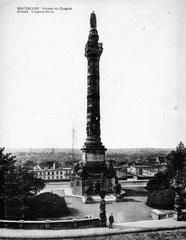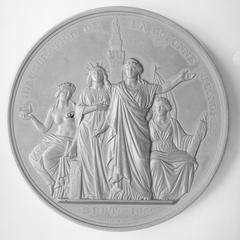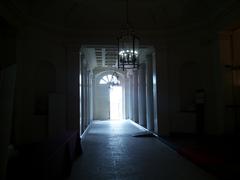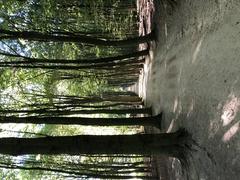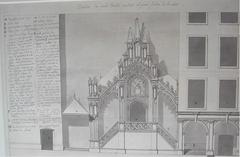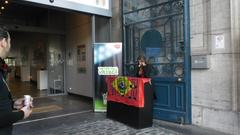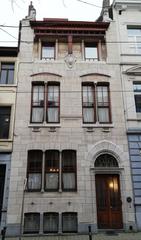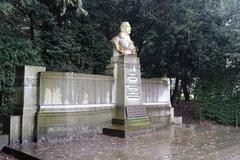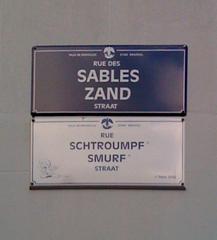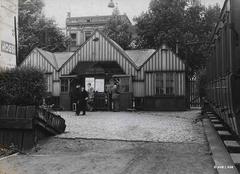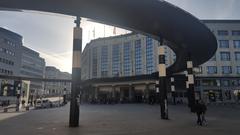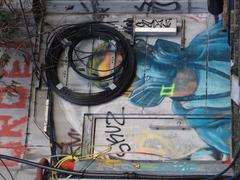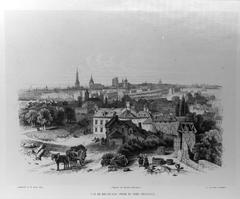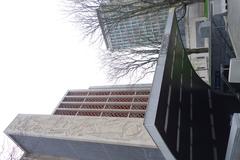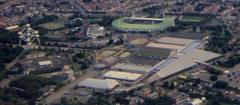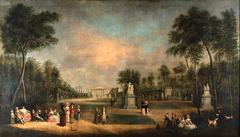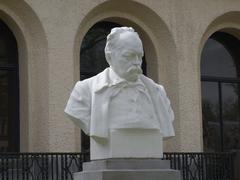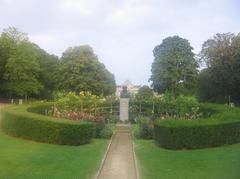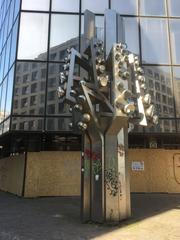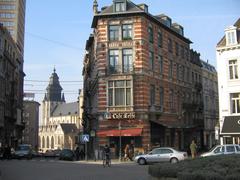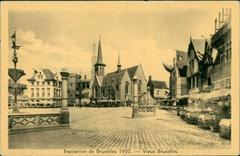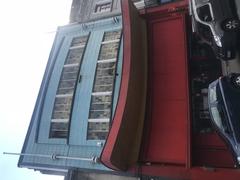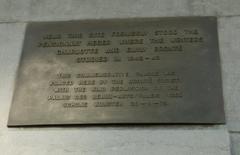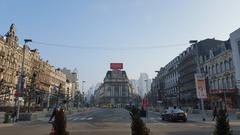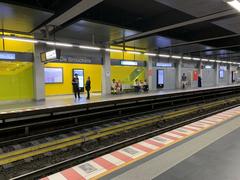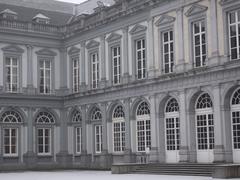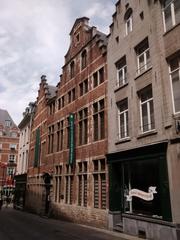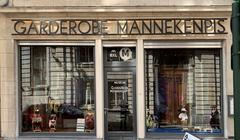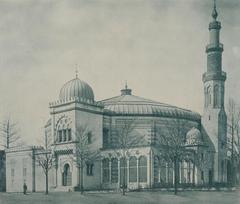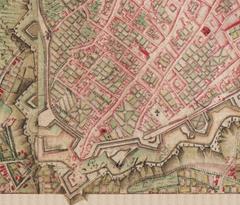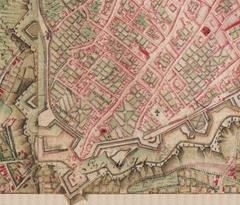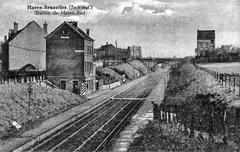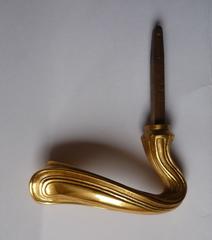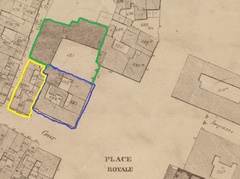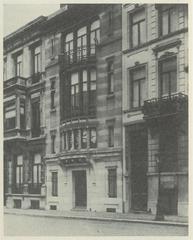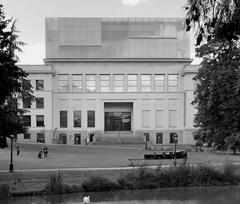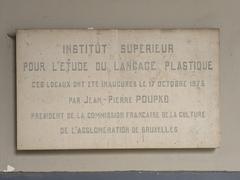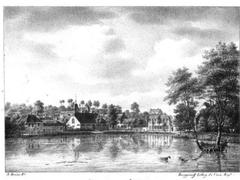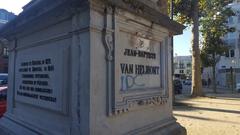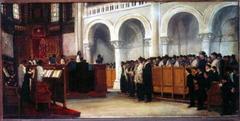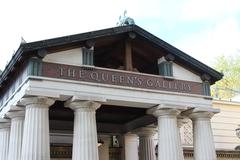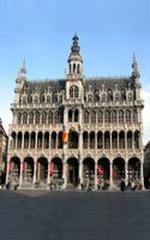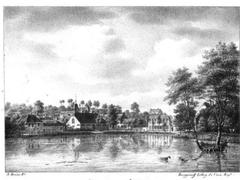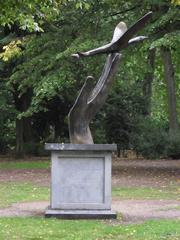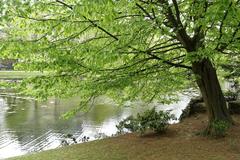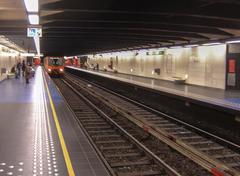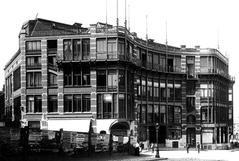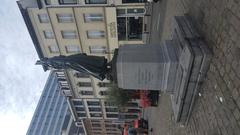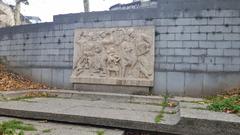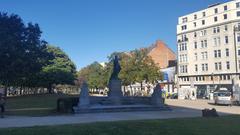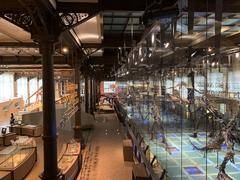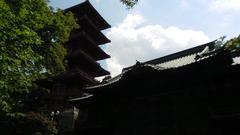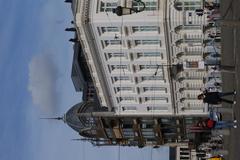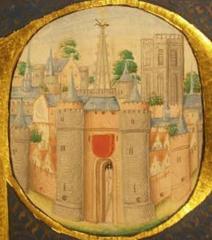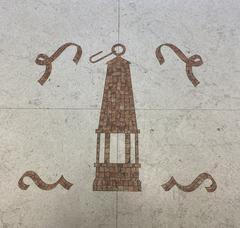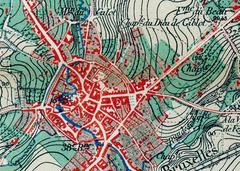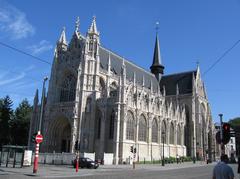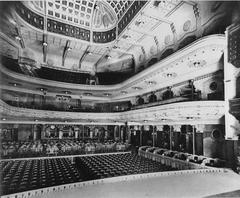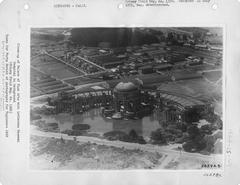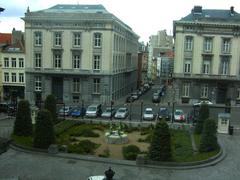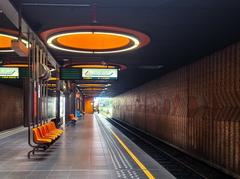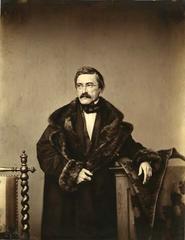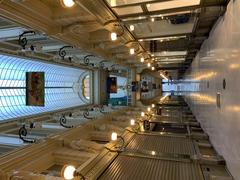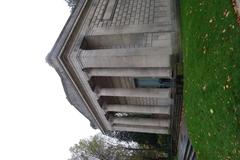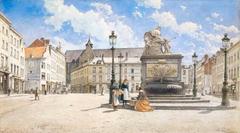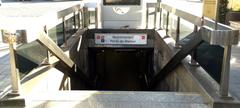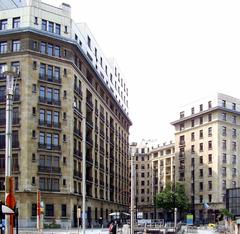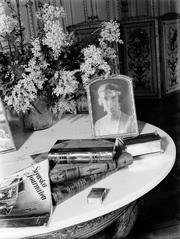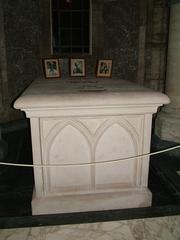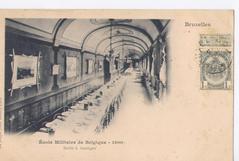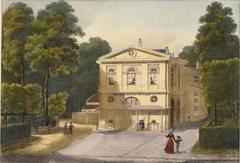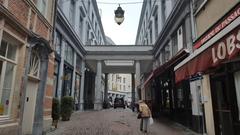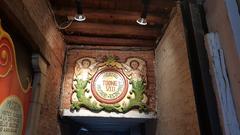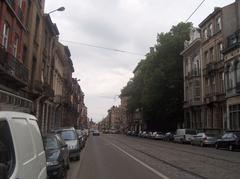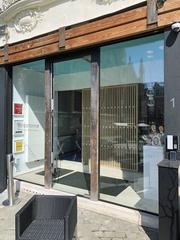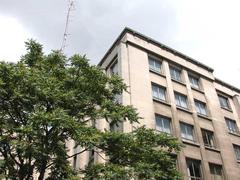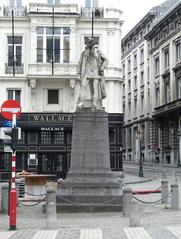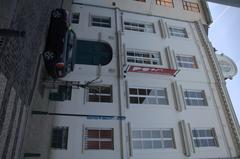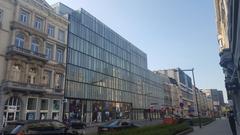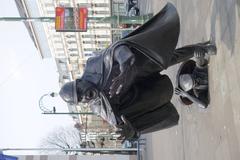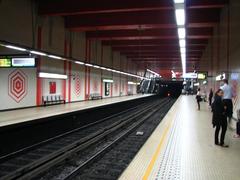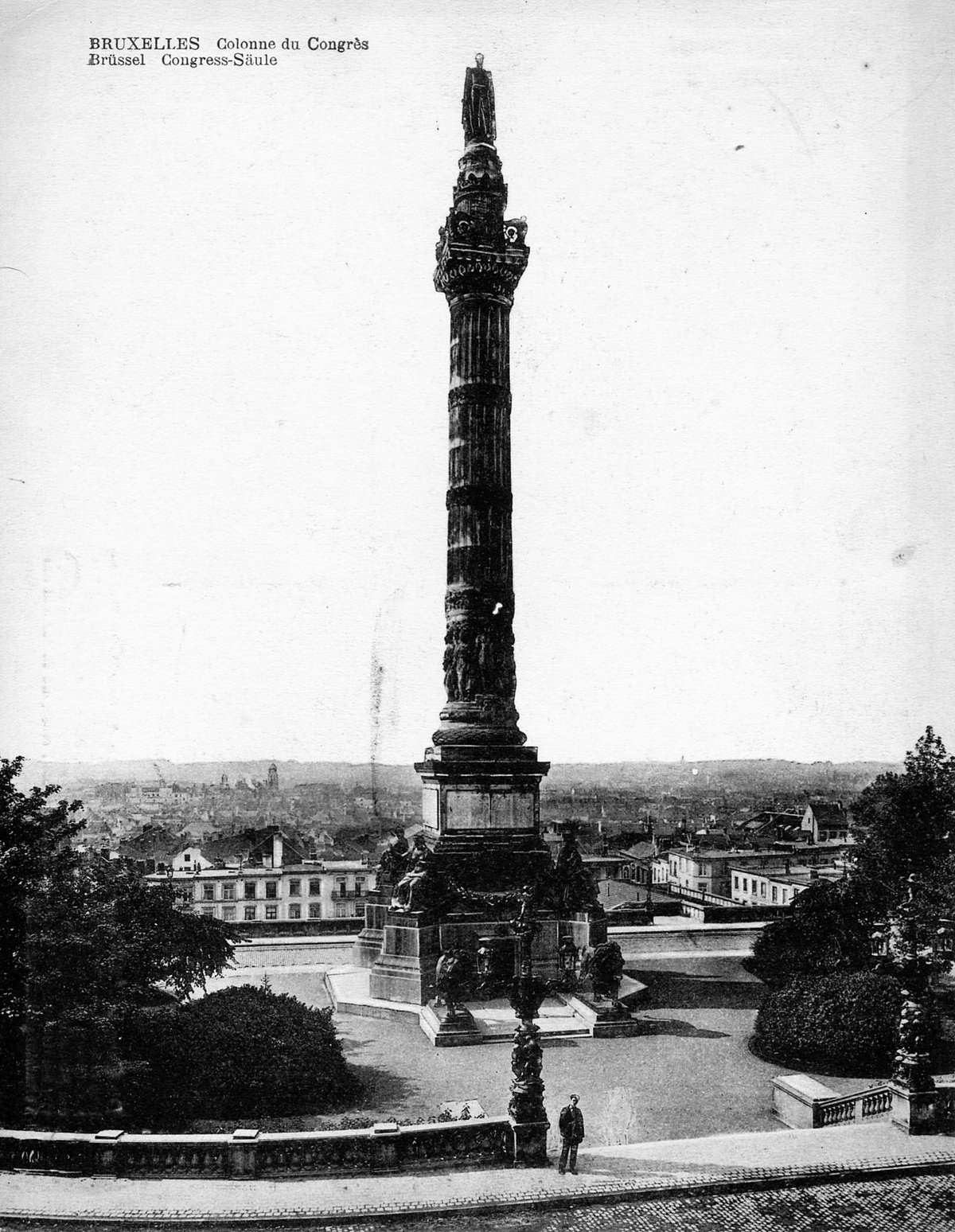
Visiting Colonne du Congrès - Essential Guide to Congreskolom in Brussels
Date: 19/07/2024
Introduction
The Colonne du Congrès, also known as the Congress Column, is an iconic monument located in the heart of Brussels, Belgium. Erected between 1850 and 1859, this monumental column was designed by the renowned architect Joseph Poelaert to commemorate the creation of the Belgian Constitution in 1831 and the establishment of the independent Kingdom of Belgium. Standing at 49 meters tall and crowned with a bronze statue of King Leopold I, the first king of the Belgians, the Colonne du Congrès is not only a significant historical landmark but also an architectural masterpiece showcasing a blend of Neoclassical and subtle Art Nouveau styles (Belgium Tourism).
The historical significance of the Colonne du Congrès is profound, marking Belgium’s transition from a territory ruled by foreign powers to an independent nation with a liberal constitution that guaranteed fundamental rights and freedoms. This landmark stands as a testament to the nation’s struggle for independence during the Belgian Revolution of 1830 and the subsequent drafting of one of the 19th century’s most progressive constitutions. The monument’s design draws inspiration from ancient Roman architecture, particularly Trajan’s Column in Rome, and incorporates numerous symbolic elements that reflect the values enshrined in the Belgian Constitution (Wikipedia).
Visitors to the Colonne du Congrès can explore the monument’s intricate architectural features, including allegorical bronze sculptures representing key aspects of the Belgian Constitution such as freedom of the press, freedom of association, and national strength. The panoramic viewpoint at the top of the column offers breathtaking views of Brussels, making it a must-visit attraction for history enthusiasts, architecture aficionados, and tourists alike (Brussels Tourism).
Table of Contents
- background-and-significance)
- [The Birth of a Nation](#the-birth-of-a-nationthe-birth-of-a-nation)
- [A Monumental Undertaking](#a-monumental-undertakinga-monumental-undertaking)
- [Symbolism and Significance](#symbolism-and-significancesymbolism-and-significance)
- visitor-information)
- [Visiting Hours and Tickets](#visiting-hours-and-ticketsvisiting-hours-and-tickets)
- [Accessibility](#accessibilityaccessibility)
- attractions-and-travel-tips)
- asked-questions-faq)
- features-and-design)
- [Neoclassical Grandeur](#neoclassical-grandeurneoclassical-grandeur)
- [Allegorical Sculptures](#allegorical-sculpturesallegorical-sculptures)
- [Hints of Art Nouveau](#hints-of-art-nouveauhints-of-art-nouveau)
- [Urban Integration](#urban-integrationurban-integration)
- [Materials and Craftsmanship](#materials-and-craftsmanshipmaterials-and-craftsmanship)
Historical Background and Significance
The Colonne du Congrès, or Congress Column, stands as a testament to the pivotal moments that shaped Belgium’s history. Erected between 1850 and 1859, this imposing monument commemorates the creation of the Belgian constitution in 1831 and the subsequent establishment of the independent Kingdom of Belgium.
The Birth of a Nation
Prior to its independence, the territory that encompasses modern-day Belgium had been ruled by a succession of foreign powers, including the Spanish, Austrians, French, and Dutch. The Belgian Revolution of 1830, sparked by a performance of the opera “La Muette de Portici” which ignited nationalist sentiments, led to Belgium’s separation from the Netherlands.
Following the revolution, a National Congress was convened to draft a constitution for the newly independent nation. This constitution, considered one of the most liberal of its time, established Belgium as a constitutional monarchy and guaranteed fundamental rights and freedoms. The Colonne du Congrès stands as a proud symbol of this pivotal moment in Belgian history.
A Monumental Undertaking
The construction of the Colonne du Congrès was a significant undertaking, reflecting the nation’s desire to create a lasting tribute to its newfound independence. Designed by architect Joseph Poelaert, the column draws inspiration from Trajan’s Column in Rome, a monument that celebrates Roman imperial victories.
Standing at 49 meters (161 feet) tall, the Colonne du Congrès is crowned with a bronze statue of King Leopold I, the first king of the Belgians. The statue, created by sculptor Guillaume Geefs, depicts the king in a regal pose, holding the Belgian constitution in his hand.
Symbolism and Significance
The Colonne du Congrès is replete with symbolic elements that underscore its historical and national significance. At the base of the column, four seated bronze figures represent the four fundamental liberties enshrined in the Belgian constitution—freedom of religion, freedom of association, freedom of the press, and freedom of education.
Bas-reliefs encircling the pedestal depict scenes from the Belgian Revolution, while bronze lions, symbols of Belgian strength and courage, guard the monument. The names of those who fought for Belgian independence are inscribed on the column, further emphasizing its role as a national memorial.
Practical Visitor Information
Visiting Hours and Tickets
The Colonne du Congrès is accessible to the public 24/7, and there is no entry fee to visit the monument. However, guided tours that provide more in-depth historical insights are available at a cost. For the latest information on guided tours and ticket prices, it is recommended to visit the official Brussels tourism website (Brussels Tourism).
Accessibility
The site is accessible to visitors with disabilities, although the surrounding area may have uneven surfaces. It’s advisable to check for any accessibility updates on the official website before planning your visit.
Nearby Attractions and Travel Tips
While visiting the Colonne du Congrès, consider exploring other historical sites in Brussels. Nearby attractions include the Royal Palace, the Magritte Museum, and the Grand Place, all within walking distance. Public transportation options are plentiful, with buses and trams providing easy access to the site.
For a more enriching experience, consider visiting during national holidays or commemorative events, when the monument often serves as a focal point for celebrations and activities.
Frequently Asked Questions (FAQ)
What are the opening hours of the Colonne du Congrès?
The Colonne du Congrès is accessible 24/7.
How much does it cost to visit the Colonne du Congrès?
There is no entry fee to visit the monument. However, guided tours are available at a cost.
Are there any nearby attractions?
Yes, nearby attractions include the Royal Palace, the Magritte Museum, and the Grand Place.
Architectural Features and Design
Neoclassical Grandeur
At the heart of the Colonne du Congrès’s design lies the Neoclassical style, popular in the 19th century for its evocation of ancient Greek and Roman architecture. This style is evident in the monument’s symmetrical and geometric design, its imposing Corinthian columns, and the use of white stone, reminiscent of classical marble.
- The Column: The towering column itself, reaching a height of 49 meters (161 feet), is a direct nod to the Roman tradition of victory columns like Trajan’s Column in Rome. This soaring element, made of nine drums of blue stone from Hainaut, speaks to the grandeur and permanence of the ideals the monument represents.
- The Base: The column stands on a massive pedestal, also a key feature of Neoclassical design. This base, constructed from Belgian bluestone, provides a solid foundation for the towering structure above and serves as a platform for the allegorical sculptures that adorn the monument.
Allegorical Sculptures
Beyond its impressive structure, the Colonne du Congrès is brought to life by a series of bronze sculptures that adorn its base and column, each telling a story about Belgian history and values. These sculptures, crafted by some of Belgium’s most renowned artists of the time, are not mere decorations but integral parts of the monument’s overall design and message.
- The Lion of Liberty: Perched atop the column, a bronze lion, a symbol of Belgium, stands guard. This majestic figure, sculpted by Eugène Simonis, represents the newly won independence and the courage of the Belgian people.
- The Pedestal Sculptures: The base of the monument is encircled by allegorical figures representing key aspects of the Belgian constitution and national values. These include sculptures symbolizing Freedom of the Press, Freedom of Association, the Separation of Powers, and National Strength. Each sculpture, crafted with meticulous detail, adds another layer of meaning to the monument.
Hints of Art Nouveau
While Neoclassicism forms the backbone of the Colonne du Congrès’s design, subtle hints of Art Nouveau, a style that emerged later in the 19th century, can be observed. This fusion of styles reflects the evolving artistic landscape of Belgium at the time.
- Decorative Elements: Look closely, and you’ll notice Art Nouveau influences in some of the monument’s decorative elements, particularly the intricate bronze wreaths and garlands that adorn the column’s base. These elements, characterized by their flowing lines and organic forms, offer a subtle contrast to the monument’s otherwise rigid Neoclassical structure.
- The Torch of Life: One of the most striking examples of Art Nouveau influence is the bronze sculpture of a woman holding a torch, known as “The Torch of Life,” located at the base of the column. This piece, created by the renowned Art Nouveau sculptor Charles Van der Stappen, stands out for its dynamic pose and flowing drapery, showcasing the movement and energy characteristic of the Art Nouveau style.
Urban Integration
The Colonne du Congrès’s location is not accidental. Situated in the heart of Brussels, at the intersection of Rue Royale and the Petit Ring, the monument stands as a focal point, visible from various parts of the city. This strategic placement underscores its importance as a national symbol and its connection to the urban fabric of Brussels.
- A Grand Avenue: The monument’s location along Rue Royale, a grand avenue lined with stately buildings, further enhances its grandeur. This setting creates a sense of perspective and allows visitors to appreciate the monument’s scale and architectural significance within the broader urban context.
- A Symbolic Crossroads: The intersection where the Colonne du Congrès stands is not just a geographical crossroads but also a symbolic one. It represents the intersection of different periods in Belgian history, the coming together of various artistic styles, and the convergence of the city’s past, present, and future.
Materials and Craftsmanship
The Colonne du Congrès is not only a masterpiece of design but also a testament to the skill and craftsmanship of Belgian artisans. The use of high-quality materials and the meticulous attention to detail in every element of the monument speak to the dedication and expertise involved in its creation.
- Belgian Bluestone: The choice of Belgian bluestone, a durable and locally sourced material, for the monument’s base reflects a desire to showcase Belgian resources and craftsmanship. This stone, known for its strength and resistance to weathering, has ensured the monument’s longevity, allowing it to withstand the test of time.
- Bronze Sculptures: The bronze sculptures that adorn the monument are not only artistic masterpieces but also examples of exceptional metalworking skills. The intricate details, the lifelike poses, and the smooth, polished surfaces of these sculptures highlight the talent and precision of the Belgian artists and artisans who created them.
Conclusion
The Colonne du Congrès in Brussels stands as a powerful symbol of Belgian independence, constitutional values, and artistic heritage. Its imposing Neoclassical design, adorned with intricate sculptures and subtle Art Nouveau elements, reflects the nation’s rich history and cultural evolution. Visitors to this monumental column can gain a deeper appreciation of Belgium’s struggle for independence and the progressive ideals that shaped its constitution.
Whether you are a history enthusiast, an architecture lover, or simply a curious traveler, the Colonne du Congrès offers a unique and enriching experience. From the panoramic views at the top of the column to the detailed allegorical sculptures at its base, every aspect of this monument tells a story of national pride and resilience. By exploring the Colonne du Congrès and nearby historical sites, visitors can immerse themselves in the vibrant history and culture of Brussels, making it a truly memorable destination (Brussels Museums).
As you plan your visit, be sure to check the latest information on visiting hours, ticket prices, and accessibility to make the most of your experience. And don’t forget to explore the surrounding attractions, such as the Royal Palace, the Magritte Museum, and the Grand Place, to fully appreciate the historical and cultural richness of Belgium’s capital city (Visit Belgium).
References
- Belgium Tourism. (n.d.). Congress Column. source url
- Wikipedia. (n.d.). Congress Column. source url
- Brussels Tourism. (n.d.). Congress Column. source url
- Brussels Museums. (n.d.). Congress Column. source url
- Visit Belgium. (n.d.). Congress Column. source url
